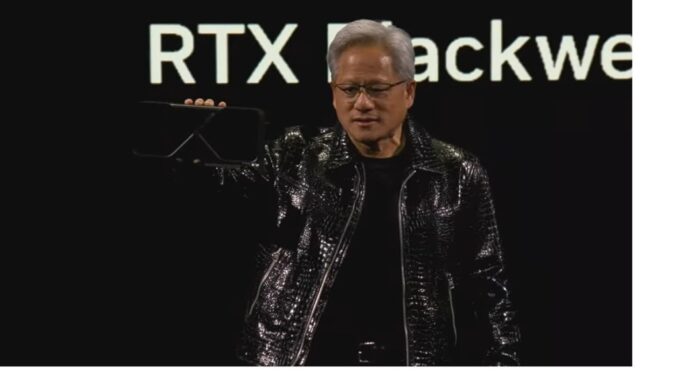
Join our daily and weekly newsletters for the latest updates and exclusive content on industry-leading AI coverage. Learn More
Nvidia confirmed that its CEO Jensen Huang met with U.S. President Donald Trump to discuss U.S. technology and AI leadership.
“We appreciated the opportunity to meet with President Trump and discuss semiconductors and AI policy. Jensen and the president discussed the importance of strengthening U.S. technology and AI leadership,” said an Nvidia spokesperson.
The meeting took place today and it coincidentally is happening a day before Trump promised to impose a bunch of tariffs on products including semiconductor chips.
Earlier this week, Trump called for tariffs on foreign computer chips, semiconductors, and pharmaceuticals from places like Taiwan in the near future.
In the speech at the House GOP Issues Conference in Miami, Trump said that manufacturers also don’t need an incentive to build their chip factories in the U.S. He suggested he would remove Joe Biden’s program of paying subsidies to chip makers like Intel to build in the U.S.
The impact of such tariffs could be huge. The Consumer Technology Association, the lobbying group for the U.S. electronics industry, warned that tariffs could take the cost of game consoles from the hundreds of dollars to $1,000.
“In the very near future, we’re going to be placing tariffs on foreign productions of computer chips, semiconductors and pharmaceuticals to return production of these essential goods to the United States of America,” Trump said. “They left us and they went to Taiwan, which is about 98% of the chip business, by the way. And we want them to come back and we won’t to give them billions of dollars like this ridiculous program that Biden has.”
The bipartisan-supported Chips & Science Act earmarked $52 billion in subsidies to enable companies to build factories in the U.S. Intel, TSMC, Coherent and Analog Devices were among the companies receiving grants from the Biden administration.
”Give everybody billions of dollars. They already have billions of dollars. They’ve got nothing but money Joe. They didn’t need money,” Trump said. “They needed an incentive. And the incentive is going to be they are not going to want to pay a 25, 50 or even 100% tax. They are going to build the factory with their own money. We don’t have to give them money. They are going to come in because it’s good for them to come in. You give them money and they don’t know what to do with it.”
Thanks to incentives rather than tariffs, the SIA said this month that the Chips and Science Act is on track to strengthen American manufacturing, create jobs, boost economic growth, and promote national security. The act’s manufacturing incentives have sparked substantial announced investments in the U.S., the group said. Intel said this week it has received more than $2 billion under the act.
“In fact, companies in the semiconductor ecosystem have announced 90 new projects across 28 U.S. states—totaling hundreds of billions of dollars in private investments—since the Chips and Science Act was introduced. These announced projects will create more than 58,000 jobs in the semiconductor ecosystem and support hundreds of thousands of additional U.S. jobs throughout the U.S. economy.
An SIA-Boston Consulting Group report released last May projected the United States will triple its domestic semiconductor manufacturing capacity from 2022—when the act was enacted—to 2032. The projected 203% growth is the largest projected percent increase in the world over that time. The report also projected America will capture over one-quarter (28%) of total global capital expenditures from 2024 to 2032.
The Consumer Technology Association said during CES 2025 that the proposed tariffs could increase prices on laptops and tablets by 46%, game consoles by 40%, and smartphones by 26%.
